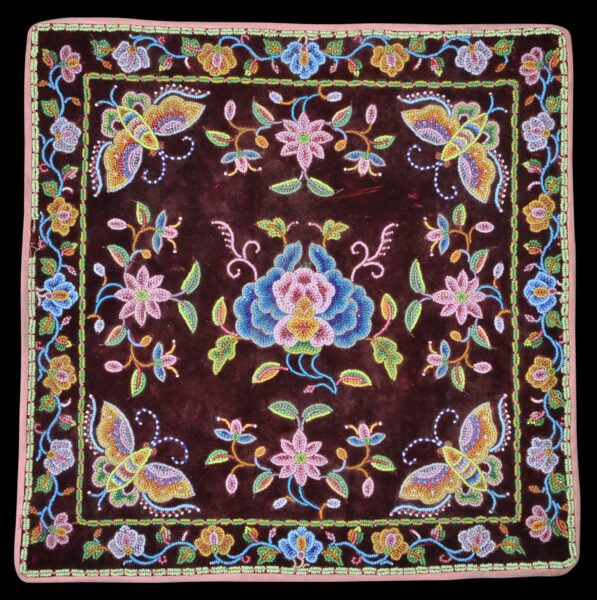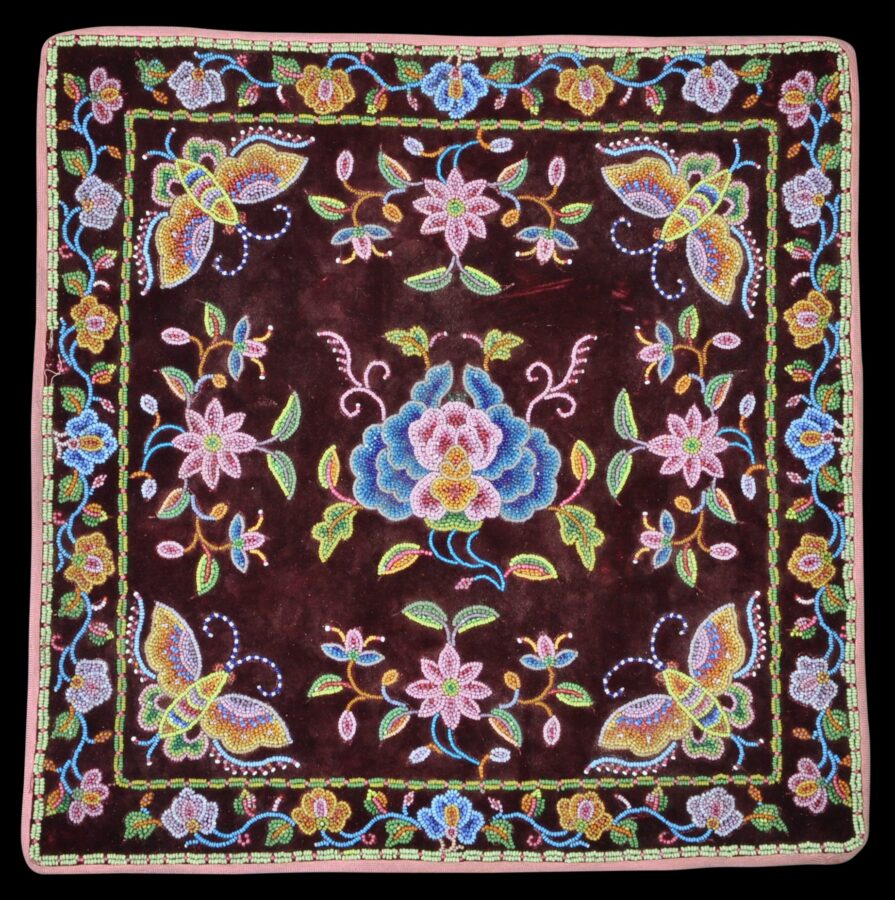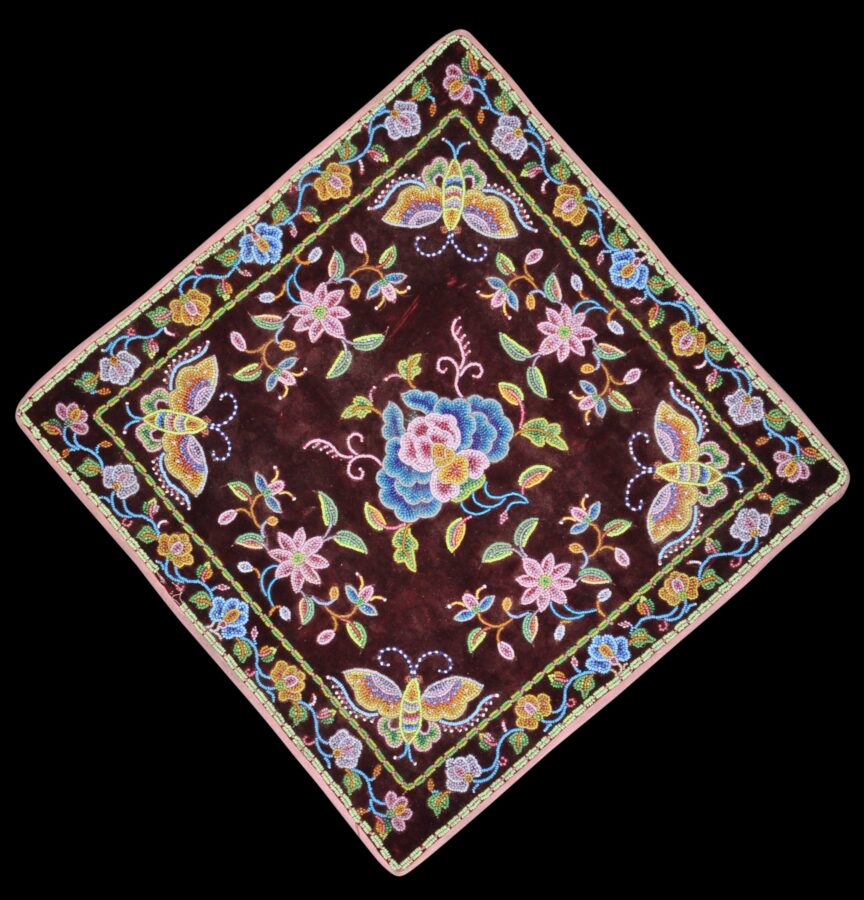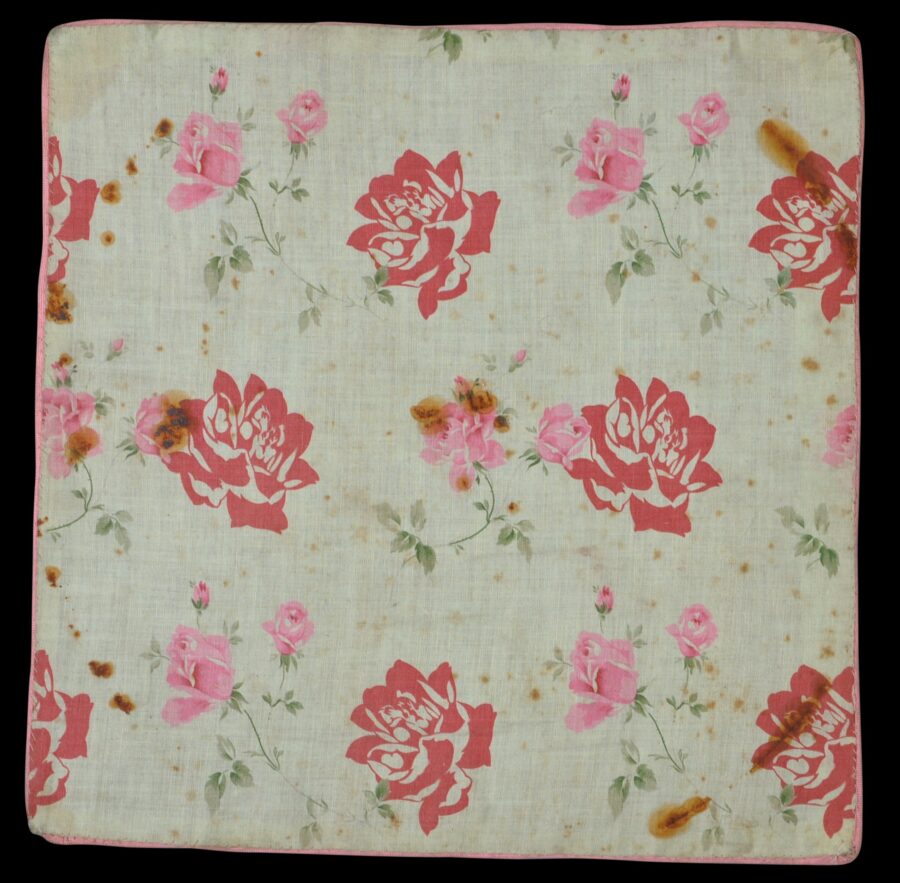This beautiful beadwork panel probably was used to cover the inside of a tray that was used to present small dowry gifts, as part of a Straits Chinese wedding ritual.
On stiffened card, the front comprises the beadwork panel. The reverse has been lined with imported printed cotton textile.
It is decorated with tiny Rocaille beads of many colours with four butterflies in each corner around a central peony motifs, all bordered by leafy, floral scrolls.
Rocaille beads were made in southern France and were widely used in Singapore and the other Straits Settlements for beading slippers, wedding pillow ends, betel set mats and other paraphernalia associated with baba/nonya culture. The Straits Chinese referred to the beads as manek potong (‘cut beads’) and acquired them from street peddlers and specialist merchants for the purpose of beading and embroidery.
The Straits Chinese were the descendants of immigrants from mainland China who had settled in the Straits Settlements of Malacca, Penang and Singapore, and also in nearby Indonesia, and who, over many generations adopted cultural habits from the local Malay people, which, when mixed with their own, created an unusual hybrid culture.
The only obvious loss is a small section of beads along one part of the outer-most border.
References
Cheah, H.F., Phoenix Rising: Narratives in Nyonya Beadwork from the Straits Settlements, NUS Press, Singapore, 2010.
Cheah, H.F, Nyonya Needlework: Embroidery and Beadwork in the Peranakan World, Asian Civilisations Museum, 2017.
Ee, R., et al, Peranakan Museum A-Z Guide, Asian Civilisations Museum, 2008.
Ho, W.M., Straits Chinese Beadwork & Embroidery: A Collector’s Guide, Times Books International, 1987.
Khoo, J.E., The Straits Chinese: A Cultural History, The Pepin Press, 1996.





